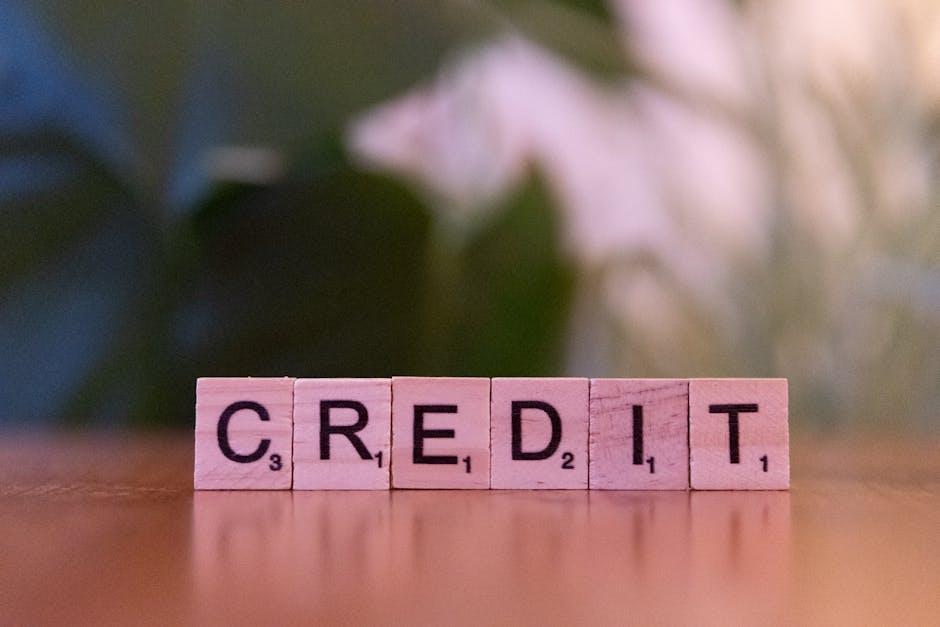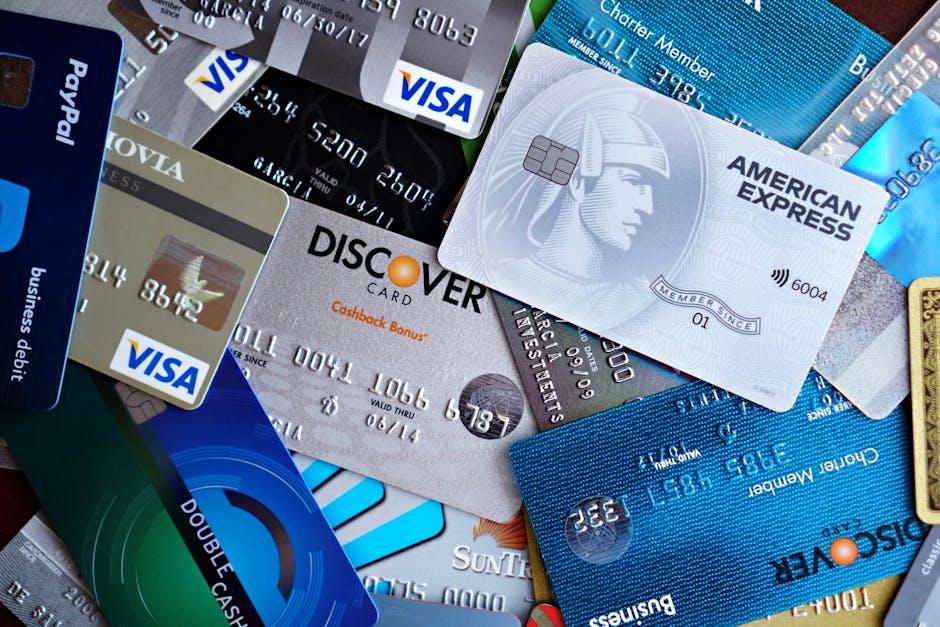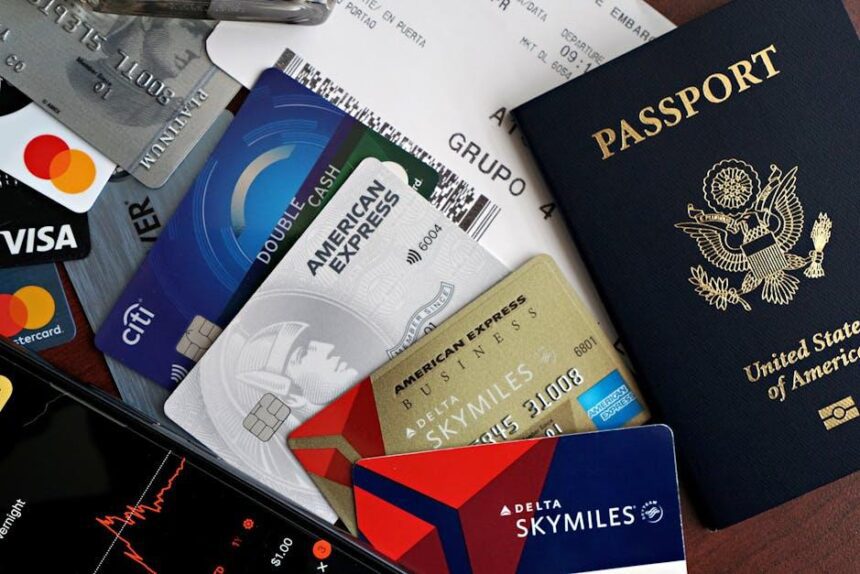Credit card debt can feel like a heavy weight, pulling you down and complicating your financial landscape. For many, the pursuit of financial freedom can seem daunting, as high-interest rates and accumulating balances create a cycle that’s hard to break. However, conquering credit card debt doesn’t have to be an overwhelming battle, nor does it have to cost you a fortune. In this article, we’ll explore simple yet effective strategies that can help you eliminate your credit card debt without spending a dime on costly services. With determination and the right approach, you can reclaim control over your finances and pave the way for a more secure financial future. Let’s dive into these straightforward steps that can transform your debt situation and set you on the path to financial liberation.
Understanding the Roots of Credit Card Debt
Credit card debt often stems from a variety of underlying factors that can impact anyone’s financial health. Understanding these roots is crucial in addressing and managing debt effectively.
High Interest Rates:
- Credit cards typically carry high interest rates compared to other forms of credit, making it easy for debts to escalate.
- The average credit card interest rate in the U.S. hovers around 16% to 25%, which can quickly compound if not managed.
Impulsive Spending:
- Many consumers find themselves using credit cards for unplanned purchases due to convenience or emotional reasons.
- Easy access to credit can lead to overspending during shopping sprees or stressful times, resulting in a cycle of debt.
Lack of Budgeting:
- Not having a clear budget can lead to excessive reliance on credit cards for daily expenses.
- Regularly monitoring spending habits and sticking to a budget is essential for maintaining financial stability.
Unexpected Life Events:
- Medical emergencies, job loss, or unexpected expenses can force individuals to rely on credit cards for urgent needs.
- These situations can lead to accumulating debt that may feel overwhelming without a solid financial safety net.
Minimum Payment Trap:
- Paying only the minimum amount due can perpetuate a cycle of debt, as most of the payment goes toward interest rather than the principal.
- This strategy may seem manageable at first but ultimately prolongs the debt repayment timeline considerably.
| Root Cause | Impact on Debt |
|---|---|
| High Interest Rates | Increases overall debt significantly |
| Impulsive Spending | Leads to unplanned debt accumulation |
| Lack of Budgeting | Causes overspending and debt reliance |
| Unexpected Life Events | May require urgent credit card use |
| Minimum Payment Trap | Delays debt resolution and increases costs |
By identifying and understanding these factors, individuals can take proactive steps to regain control over their finances and develop effective strategies to conquer credit card debt.

Crafting a Solid Budget to Tackle Debt Efficiently
Creating a robust budget is a crucial step in reclaiming control over your finances and efficiently tackling debt. Here are the key components to help you craft a budget tailored to your needs:
- Understand Your Income: Start by listing all sources of income, including your salary, side jobs, and any benefits you receive. This forms the foundation of your budget.
- Track Your Expenses: For a month, keep a detailed log of your spending. Categorize them into fixed (like rent or mortgage, utilities) and variable expenses (like groceries, entertainment).
- Establish Spending Limits: Utilize the 50/30/20 rule as a guideline:
| Category | % of Income |
|---|---|
| Needs (Fixed Costs) | 50% |
| Wants (Variable Costs) | 30% |
| Savings and Debt Repayment | 20% |
- Allocate for Savings: Set aside 20% of your income for savings and debt repayment, ensuring that you’re actively reducing your debt while also building a financial cushion.
- Adjust and Monitor: Revisit your budget monthly. Are you sticking to your limits? Make adjustments as necessary to stay on course.
- Use Budgeting Apps: Consider tools like Mint or YNAB (You Need a Budget) to automate tracking and help visualize your spending habits.
- Seek Help if Necessary: If you’re feeling overwhelmed, consult a credit counselor or financial advisor. Many non-profit organizations offer free services to help you navigate your financial situation.
Remember, budgeting is not just about restricting yourself; it’s about empowering you to make informed financial decisions. By systematically following these steps, you can take a proactive approach to conquer your credit card debt.

Exploring Free Resources for Financial Guidance
Finding free resources for financial guidance can significantly impact your journey to conquering credit card debt. Here are some valuable options available to help you along the way:
- Credit Counseling Services: Non-profit organizations like the National Foundation for Credit Counseling (NFCC) offer free or low-cost credit counseling. These services can help you create a budget, understand your credit report, and develop a plan to manage debt.
- Online Financial Tools: Websites like Credit Karma and NerdWallet provide free access to credit scores and reports, plus personalized tips on improving your financial health. These platforms often feature calculators to envision repayment plans.
- Educational Workshops: Many community banks and credit unions host free workshops on personal finance and credit management. Check local listings for upcoming events that can increase your financial literacy.
- Government Resources: The Federal Trade Commission (FTC) outlines consumer rights and offers guides on handling debts. These resources can empower you to navigate financial challenges effectively.
- Books and eBooks: Consider reading free eBooks available through public libraries or platforms like Project Gutenberg that cover personal finance. Look for titles that specifically address credit card management and debt repayment strategies.
| Resource Type | Examples |
|---|---|
| Credit Counseling | National Foundation for Credit Counseling (NFCC) |
| Online Tools | Credit Karma, NerdWallet |
| Workshops | Local Banks, Credit Unions |
| Government Resources | Federal Trade Commission (FTC) |
| Books | Public Libraries, Project Gutenberg |
Utilizing these free resources can provide you with the knowledge and tools necessary to tackle credit card debt effectively. Taking advantage of these offerings can build a solid foundation for your financial future.

Empowering Yourself with Smart Payment Strategies
Managing credit card debt can feel overwhelming, but with the right payment strategies, you can regain control over your finances. Empowering yourself with smart payment tactics is crucial for not only conquering current debt but also preventing future issues.
One of the most effective methods is the debt snowball approach. This strategy focuses on paying off your smallest debts first, which can provide a psychological boost and build momentum:
- List all your credit card debts from smallest to largest.
- Make minimum payments on all your debts except the smallest.
- Put any extra funds toward the smallest debt until it’s paid off.
- Once paid, move on to the next smallest debt.
Another powerful strategy is the debt avalanche method, which prioritizes debts with the highest interest rates:
- List your debts by interest rate, from highest to lowest.
- Make minimum payments on all debts except the one with the highest interest rate.
- Direct all extra payments toward the highest rate debt.
- After paying off that debt, proceed to the next highest rate.
To further empower your payment strategies, consider these additional tips:
- Create a budget: Track your income and expenses to find areas where you can save.
- Set up automatic payments: This ensures you never miss a payment and helps in avoiding late fees.
- Negotiate lower interest rates: Contact your credit card issuer and request a rate reduction; they may be willing to help.
| Strategy | Description | Best For |
|---|---|---|
| Debt Snowball | Focus on paying off the smallest debts first for quick wins. | Those who benefit from psychological boosts. |
| Debt Avalanche | Pay off debts with the highest interest rates first. | Those looking to save on interest payments. |
| Budgeting | Create a realistic budget to track and control expenses. | Anyone needing structure in their finances. |
| Automatic Payments | Set this up to avoid missed payments and fees. | People with busy schedules who might forget due dates. |
| Interest Negotiation | Request lower rates from your credit issuer. | Those with good payment history looking to save. |
Implementing these strategies will not only help you tackle existing credit card debt but also set a solid foundation for a healthier financial future. Remember, consistently reviewing and adjusting your approach to payments is key to long-term success.

To Wrap It Up
As you embark on your journey to conquer credit card debt, remember that every step counts. By following these simple strategies, you’re not just working towards financial freedom, but you’re also building habits that foster lasting financial health. Each bill you tackle and every budget you create brings you one step closer to a debt-free life. Stay committed, be patient, and celebrate your progress along the way. With determination and the right approach, you can reclaim your financial future and unlock the doors to a more secure, stress-free lifestyle. Your path to freedom begins now.











